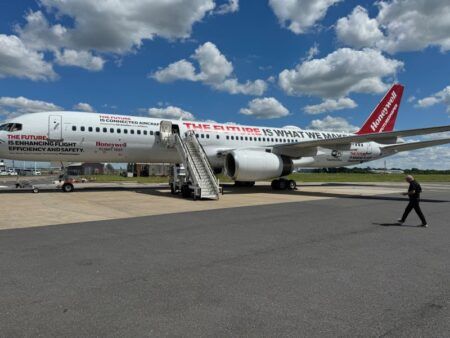Ultrasonic inspection of turbine fan blades (Image: Southwest Airlines)
The FAA is to issue a directive for the ultrasonic inspections of the fan blades in certain CFM56-7B engines to take place after the tragic incident onboard a Southwest Airlines flight from New York La Guardia to Dallas Love Field airport on April 17.
The airworthiness directive, which will be issued before the end of the of month, will require the ultrasonic inspections of the fan blades when they reach a certain number of takeoffs and landings. Blades that fail the inspection will have to be replaced.
Early reports from the USA’s National Transportation Safety Board (NTSB) are that a fan blade in a CFM56-7B engine broke, causing the engine to fail and leading to a chain of events that led the window of the Boeing 737-700 breaking and the rapid depressurization of the cabin.
A passenger, a woman from New Mexico, was tragically killed when she was nearly sucked out of the window. The aircraft subsequently successfully landed at Philadelphia Internaitonal Airport.
In response, Southwest Airlines is accelerating its existing engine inspection program relating to the CFM56 engine family.
In a statement, Gary Kelly, Southwest Airlines chairman and CEO said,” GE does the heavy engine overhaul and maintenance work. It provides the guidelines for maintenance, inspection and repairs.
“In addition, Southwest conducts periodic inspections at a higher frequency than what is called for by GE or CFM. In addition to our accelerated inspections, we are meeting with GE and Boeing on the progress of the inspections and are continuing to work with them during the investigation.
GE and Safran Aircraft Engines are sending 40 technicians to support the accelerated inspection program for the CFM56-7B, which powers most of the airline’s 737-fleet. The inspections will take place over the next 30 days.
CFM International has also sent a team of technical representatives to assist the NTSB in its investigation of the incident
The CFM56-7B engine powers more than 6,700 aircraft worldwide. The engine family has accumulated more than 350 million flight hours.
April 20, 2018




